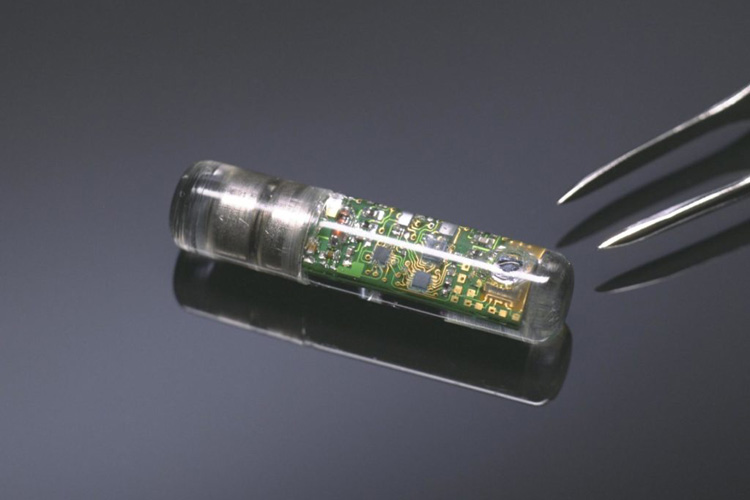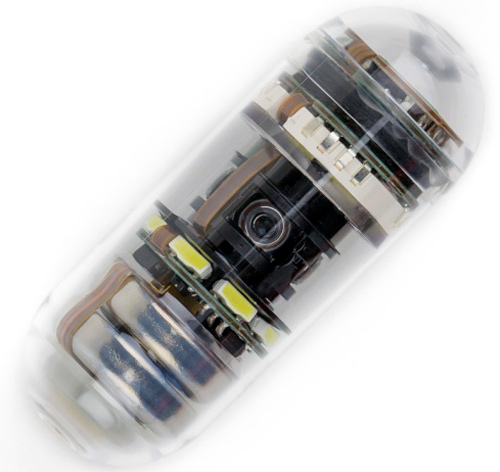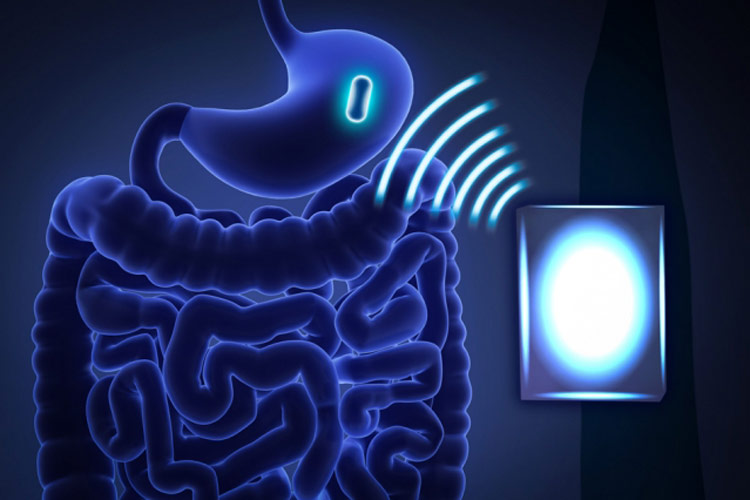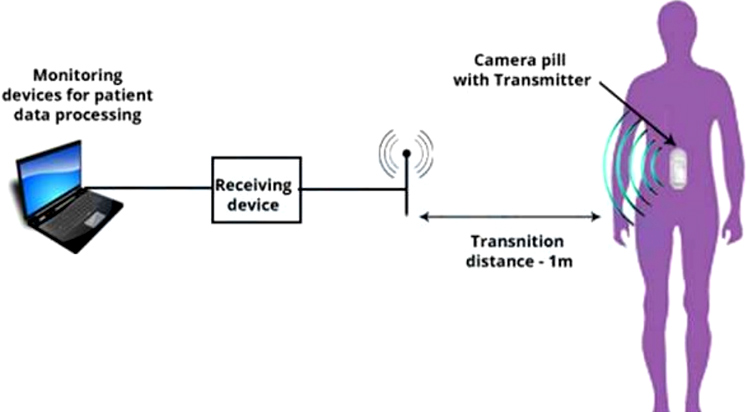
Would you want to swallow electronics? Yes, you heard that right! Electronics, in general, are not meant to be eaten. They have toxic and indigestible materials and if they get stuck inside a human body, they can lead to serious internal damage. However, researchers around the globe are working towards making the electronics that you can swallow. In fact, there is one such field of electronics known as ‘Edible Electronics’.
Now, the question that comes to our mind is, what are edible electronics and why would we want to ingest electronics? Read on to get the answer to these questions.
Since years, there have been a lot of innovations that we could call as the next big thing in medical science but the electronic pill technology is here to stay and top the chart. Bridging the gap between engineering and medicine, electronic pill technology has come a far way. It has witnessed a lot of changes but the researchers around the world are still coming up with highly advanced solutions to change the way doctors diagnose and treat various medical conditions of the patients.
Our body is quite a sensitive system and determining what is happening in the stomach and intestines of a human being is one of the main challenges that doctors are facing. No doubt endoscopic instruments are helping them inspect the colon and examine the stomach of the patients. However, with this age-old method, it is not possible to easily view some areas of the stomach and intestines, and sometimes doctors are unable to detect the underlying problem.
Electronic Pill is helping doctors and patients alike. With these technology-driven pills, doctors can get real-time data for a quicker and accurate diagnosis. Patients too are heaving a sigh of relief with these pills as the pills have reduced the number of unnecessary procedures and are far more comfortable monitoring methods.
What is an Electronic Pill?
Electronic Pill is a tiny capsule-sized electronic device that with the help of various components encapsulated in a small pill helps doctors in investigating several stomach-related diseases, bowel injuries, unexplained bleeding, malabsorption disorders, ulcers, tumors of the small intestine and inflammatory bowel diseases, etc.
In other words, an electronic pill is a medical monitoring system in the form of a small pill with an ingestible sensor that begins transmitting the medical data when it is consumed by the patients. These swallowable pills can withstand the harsh acidic environment of the gut and can help doctors in temperature analysis, pH measurements, and collecting pressure data too.

This little pill works on wideband technology which means these can transmit raw video data without compressing thereby resulting in low-power, less delay in real-time and increased picture resolution. As a painless alternative to catheters, endoscopy, colonoscopy, and radioisotopes for collecting information about the digestive tract of a person, an electronic pill ensures to make the lives of patients comfortable.
Electronic Pills – How it all started to where we are today
The emergence of swallowable electronics dates back to 1957 when Mackay invented the first radio-telemetry capsule with one transistor. The first electronic pill was developed by Dr. John Cooper and Dr. Eric Johannessen from Glasgow University (UK) in 1972. Since then, many research and developments have been carried out.
The technology caught up invention in the 1990s. However, it was challenging to create edible electronics as certain components like batteries have unfriendly stuff that is harmful to humans. Overcoming these challenges, researchers came up with the ingestible sensor component which was approved by U.S FDA in 2012. Abilify MyCite (aripiprazole tablet) manufactured by Otsuka Pharmaceutical was the first digital pill that was approved by the United States Food and Drug Administration (FDA) in November 2017.
In January 2016, Barton Health became the first institution to commercially offer electronic pills to treat patients with chronic medical conditions and in the same year, Children's Health in Dallas, Texas commercially used electronic pills with pediatric patients.

Although the idea of electronic pills has been around for long, researchers are now bringing this technology to reality. The Electronic Pill market is dominated by North America and Europe owing to the rising prevalence of gastrointestinal (GI) disorders and the rapidly growing health sector. Technologically advanced systems for early diagnosis of gastrointestinal disorders have remarkably influenced these regions.
In 2016, the global electronic pills market was worth $779.9 million and by 2025, it is anticipated to reach $3 billion. In the future, the researchers are planning to make electronic pills with sensors that will measure the patient’s heart rate and breathing rate. IntroMedic, Medimetrics S.A, Medisafe, Medtronic, Olympus Corporation, Proteus Digital Health, CapsoVision, Inc, Bio-Images Research Limited, Given Imaging, etc. are some companies that are making Electronic Pills. Also, EnteraSense is an early-stage startup based in Galway, Ireland that develops electronic pills to help doctors monitor upper gastrointestinal problems.
What is inside an Electronic Pill?
Electronic pills comprise of various components/parts such as control chip, silver oxide cells, radio transmitter, and sensors. These components are combined and arranged in a compact easy-to-swallow pill-shaped capsule that can be passed through the gastrointestinal tract.
The electronic pill has multichannel sensors for in-depth and detailed investigation of diseases. The four sensors commonly used in electronic pills are pH ion-sensitive field-effect transistor (ISFET) (for measuring ion concentration in solutions), temperature sensor (to identify the body temperature), dual-electrode conductivity sensor to measure conductivity and a three-electrode electrochemical oxygen sensor to calculate the rate of dissolved oxygen and identify the activity of aerobic bacteria in the small and large intestines. All these sensors are controlled by an application-specific integrated circuit (ASIC) and the other components of the electronic pill are connected to ASIC consisting of analog signal conditioning.

Types of Electronic pills
Broadly, electronic pills are classified into two types depending on the presence of a camera or sensor in it. Based on the functions like imaging, sensing different types of gasses, monitoring medication compliance and sensing electrochemical signal; different types of electronic pills are:
- Imaging Pills: These pills contain video cameras and are used for generating images of the macroscopic structures of organs like the stomach and small bowel.
- Medication Monitoring Pills: Used for monitoring the absorption of medication or compliance sends the signal that the user needs to take the medicine. These are activated in the stomach by pH differences and transmit via Bluetooth.
- Gas Sensing Pills: Used to detect the partial-pressures of different gasses produced as the byproduct of metabolic reactions by bacteria in the intestines.
- Electrochemical Sensing Pills: Used in performing cyclic, square wave, and differential pulse voltammetry. Voltammetry is used in vitro on stool liquid as a Gi tract diagnostic tool.
How does Electronic Pill work?
When a person swallows the electronic pill, it takes images as it is propelled forward by peristalsis. When the pill moves through the gastrointestinal tract, it starts detecting diseases and abnormalities. The pill can easily reach the small intestine and large intestine and can deliver real-time information that gets displayed on the monitor. The electronic pill travels to the digestive system, collects data and sends it into the computer with a distance of 1 meter or more.

Where does the electronic pill go?
One important question that might be hovering over your mind while reading about the electronic pills is that where does the pill go once it has been ingested, does it remain inside the patient’s body?
As the electronic pill travels through the gastrointestinal tract, it collects information such as acidity, pressure and temperature levels or images of the esophagus and intestines which are used by the doctor for analysis. Thereafter, it pushes down and reaches the colon and eventually comes out of the body through bowel movement in a day or two.
Advantages and Conclusion
The electronic pills are bringing about a great change in the healthcare sector and have many benefits over traditional medical options. Firstly, the pill is quite small in size so, it is easy for the patients to swallow. Moreover, it has low power consumption. The major drawback of this swallowable electronic pill is that it is very expensive and not available in all countries. Also, it cannot detect radiation abnormalities.
Having said that, we certain people might argue about the ethical concerns and side effects but one thing that we are sure of is that these little magical electronic pills are here to stay. They have successfully merged the diagnostics and treatment, and such innovative technologies like ‘Electronic Pills’ are creating a great impact on the lives of people and ensuring to provide utmost comfort to the patients and bring a revolution in the healthcare industry.





